Can you believe that with 3000 yen, you can visit the most beautiful destinations in Kyoto from Osaka? Enchanted Kyoto is renowned all over the world for many ancient architectures and buildings. There are a lot of places with natural beauty in harmony with artificial buildings such as temples and shrines. Here is the list of spots in order that you can visit within one day departing from Tennoji station, Osaka and the entire travel expenses cost no more than 5000 yen.
1. Nagaoka Tenmangu
Nagaoka Tenmangu is obscure but unique for its Tsutsuji (Azalea) blossom in May. Many photographers are intrigued by the arrays of breath-taking deep red Azalea along the entrance path in the early May. If you want some hundred-like photos, this is definitely the best place to start out if you visit Kyoto in early May.
There are small ponds reflecting floating wooden houses on both sides with an old temple looming at the end of the walking path. The entry is free of charge. The nearest station is Nagaokatenjin which can be reached easily from Umeda station with only 380 yen (using Kyoto Kawaramachi Line with no transfer).
It takes 15 mins to walk from Nagaokatenjin station to the temple. I suggest to go early in the morning in order to evade those accidental frustrating photobombs and basking in the sun will boost your energy and vigor for the trip.
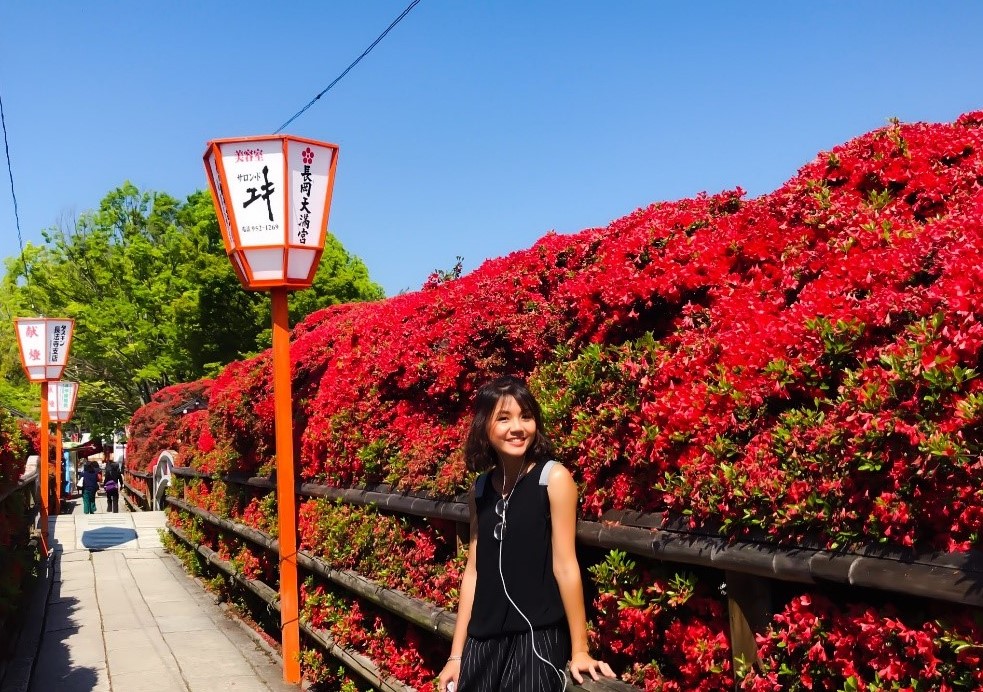
Access: Get on Osaka loop line train (yamatoji rapid) on platform 17 at Tennoji station and get off at Osaka station. Get out of Osaka station and walk 500m to Osaka Umeda station and transfer to Hankyu Kyoto Kawaramachi limited train bound for Nagaokatenjin station. Cost: 580 yen
I would highly recommend you to buy IC card such as ICOCA (for Kansai region) or Pasmo, Suica (for Kanto region) while travelling in Japan. It is electronic prepaid card for paying the bus and train fee with a touch on the ticket gates.
With this convenient card, there is no need to purchase tickets. You can buy these cards at any ticket vending machines in large train stations such as Osaka, Umeda and Tennoji station.
If you have trouble finding and getting these cards, just head for the information counter, English speaking staff are always available to help. After returning IC card when you leave Japan, you will get your deposit money back.
2. Arashiyama-Bamboo Forest

The second destination in this list is the “must-go” place according to many travel bloggers-The bamboo forest. Actually, the bamboo forest is so overwhelmed with people that I could not relish its beauty completely. You should better go early in the morning to avoid the crowd.
To be frank, the bamboo forest did not amuse me because I have seen enough bamboos in Vietnam where I come from, but it might be a new experience for Westerners to see green towering bamboo grove and sail a boat in Arashiyama.
Keep in mind to prepare a good pair of shoes because you have to walk a lot here. And don’t be disappointed if your photos do not look like those on the Internet. Art is a lie :))) The spot is covered with a lot of green in summer and turns to red-yellow fall colors.
Access: From Nagaokatenjin station, take the Semi-express train bound for Kyoto Kawaramachi and get off at Saiin station at the 6th stop. Then walk to Sai station for Randen train, which runs on the road together with cars, bound for Arashiyama and get off at Arashiyama station. There are English signboards at Arashiyama station for the walking route, so you do not need to worry.
3. Kinkakuji Temple (the Golden Pavilion)
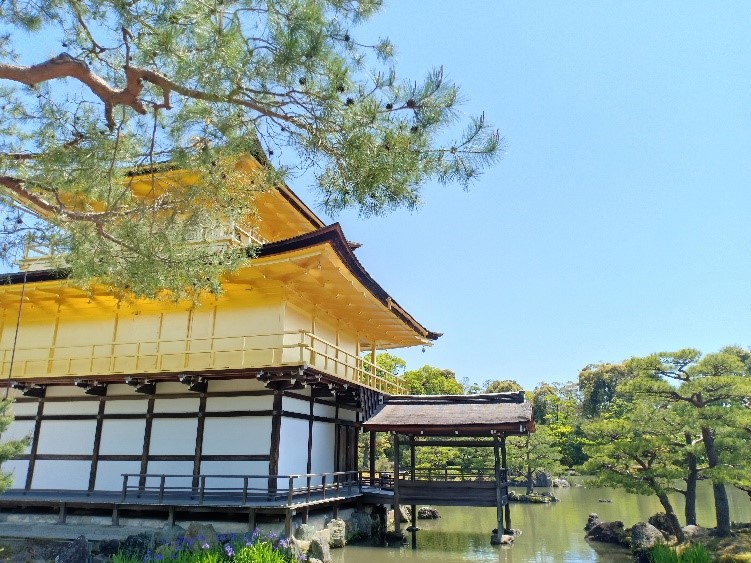
There is no doubt that Kinkakuji temple is the most famous spot in Kyoto which is frequented by thousands of visitors every day. The temple is worth visiting all year round, especially in winter when snow accumulates on the top of the pavilion, which creates a truly romantic scene.
I was swooning over the charming beauty of Kinkakuji as soon as I saw it. The entrance fee is 400 yen for adults and 300 yen for children up to junior high school. An information leaflet and a map will be provided to guide you around the spot.The sheer charm of the Golden pavilion overlooking the pond surrounded by a flourishing garden denotes Japanese unique temple construction style.
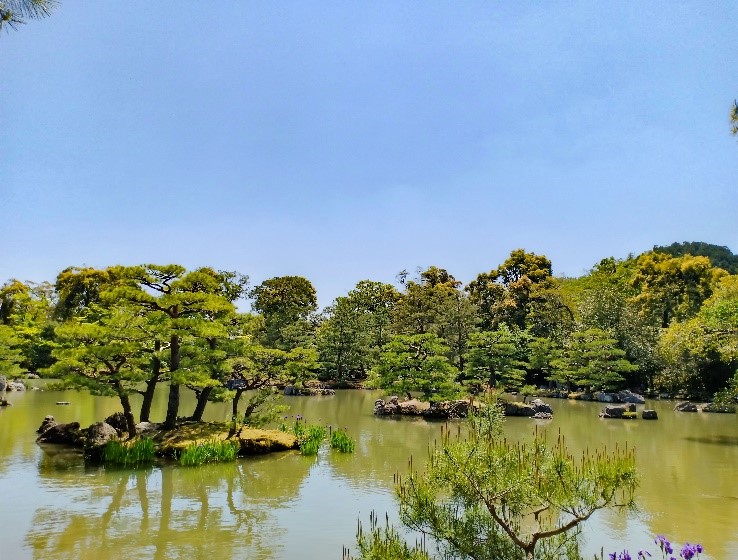
The pavilion is a replica rebuilt after the original one burnt down in fire in 1950. There is an astonishing history behind the construction of the temple. If you are a fan of Japanese history, do not miss this spot!
The zest of visiting Kinkakuji is the soft matcha ice cream served at vendors outside the temple. It is indisputably the best to enjoy a cool ice cream under the sweltering hot of Kyoto, especially in summer from June to August.
Access: From Arashiyama station, you can reach there by train and bus. Take Randen train at Arashiyama station which is bound for Shijo Omiya and get off at Nishioji Sanjo station after 9 stops. Navigate to the station exit and head for Nishi Oji Sanjo bus stop. Bus 205 will take you to Kinkakuji. I recommend to buy the Kyoto one day bus pass for 600 yen to get around Kyoto. You can buy this pass on the bus by asking the bus driver. It would save you pretty pennies. Entry fee is 400 yen for adults.
4. Shimogamo Shrine

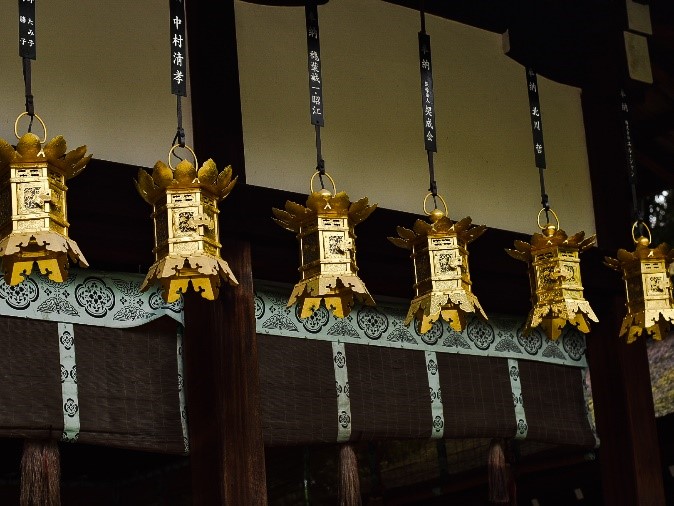
Shimogamo is a 2000-year-old World Heritage Site located between Kamogawa and Tamanogawa rivers. The lush green forest path is the highlight of the shrine. You can find a lot of love knots, various kinds of souvenirs for fairly high prices compared to other shrines in Kyoto (maybe because it is older? you know, old is gold), even 5000$ lanterns for health wish.
This is an iconic spot where many Japanese wedding ceremonies are held. You may easily bump into a bride in traditional wedding dress walking around the shrine with her groom. Entry fee is free. It is a pleasure to walk through since it in enclosed in a vast flourishing small forest.
Access: From Kinkakujimichi bus stop, get on bus 205 which will take you to “Shimogamo jinja mae” bus top which is right in front of the shrine.
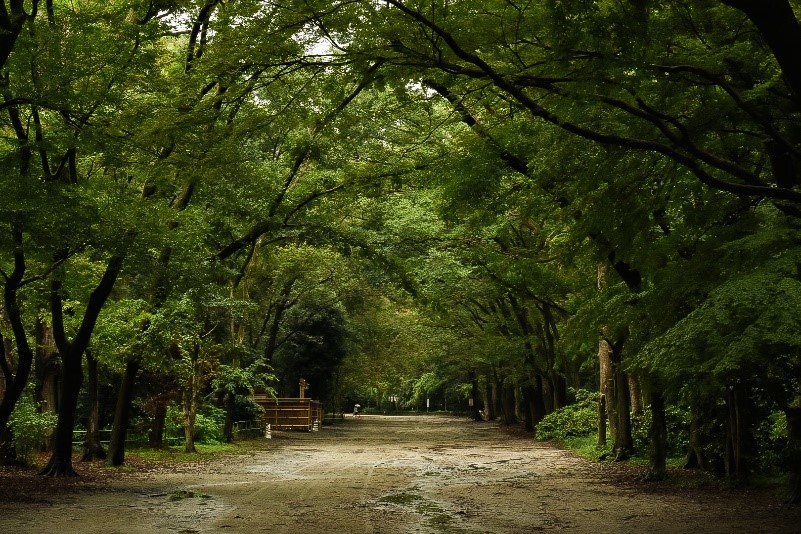
5. Gion Ward
Gion Ward is an inherently bustling area regardless of day or night, also known as the Geisha district where you can see Geisha walking on the streets if you are lucky enough. Another option to meet them is entering Geisha restaurants in Gion. I am pretty sure it costs an arm and a leg. I have heard that if you walk along Gion streets at night around 10-11 pm, you probably bump into a Geisha walking back home from work.
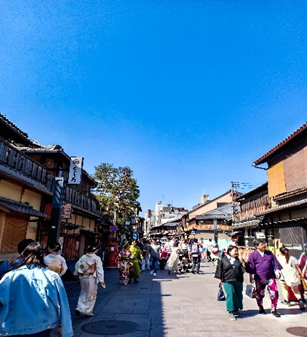
There are a plenty of shrines, shops and malls along the streets and some pagodas on the way. The most well-known one must be Yasaka Shrine (with stunning light up at night) and not to mention Yasui Konpiragu shrine which is known as Geisha shrine,
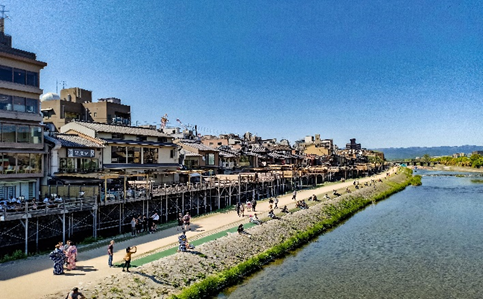
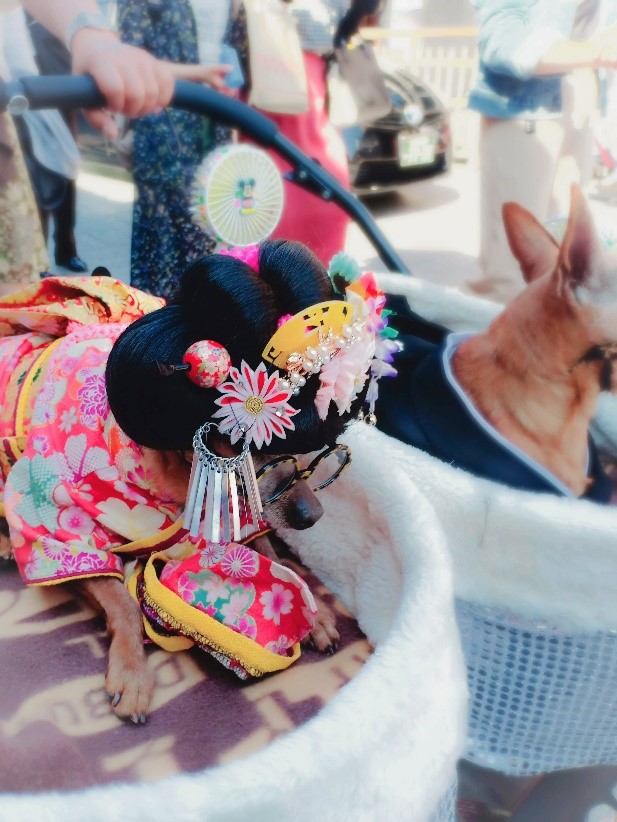
where one can see geisha and maiko festivals, dances, old traditional period dresses, particularly a stone with a hole that people usually crawl through, etc. There are tons of street foods sold along the walking paths which are a pleasure to enjoy during your trip in Kyoto. Try exploring narrow tiny paths tucked away behind big buildings which represent the true vibe of local lifestyle with small restaurants, handcraft stores, Japanese styled bars, shrines,…
Access: Take bus 205 at the same Shimogamo jinja mae bus stop and get off at Shijo Kawaramachi bus stop. From there you can start walking and explore the busiest streets of Kyoto.
6. Kiyomizu Temple
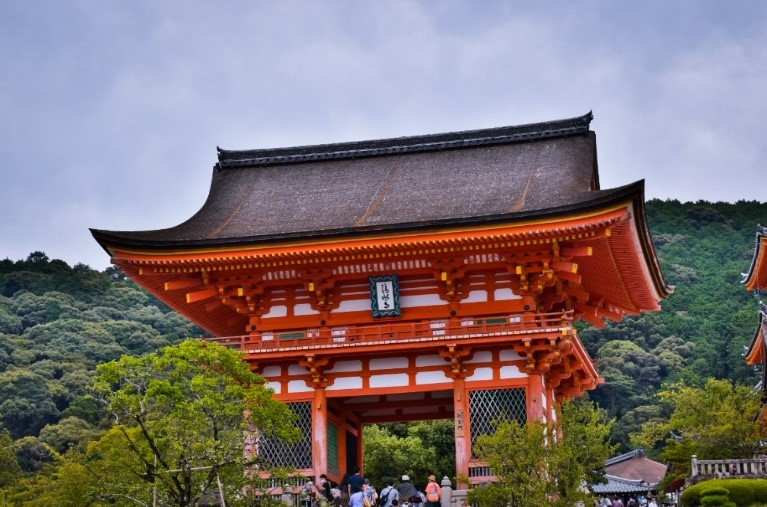
One of the most crowded destinations in Kyoto. I would not recommend this place if you do not have time and tired of walking because you have to climb uphill for 10 minutes from the bus stop to the temple entrance. I have been here six times to buy their lucky amulets (called Omamori in Japanese) for health and career.
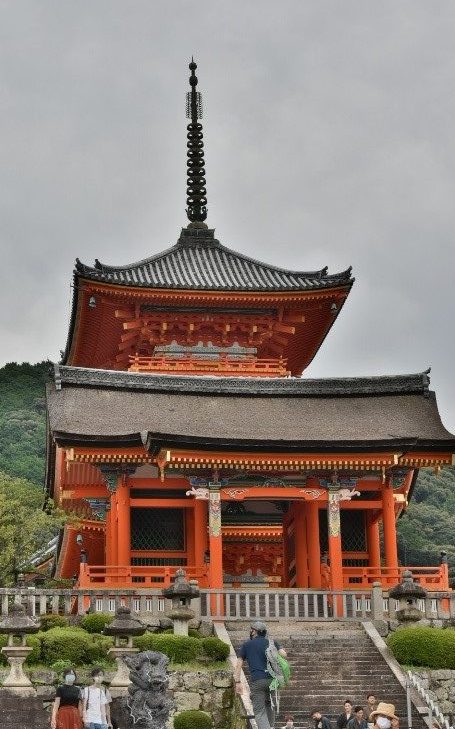
The temple is the most enchanting in spring when the area is covered with cherry blossom. The temple worships Daikokuten God which symbolizes wealth and prosperity. The day we went there, it took us 1.5 hours to get out of the parking lot since we traveled by car. The one-way lane is quite narrow and even buses cannot run on time. The traffic jam often escalates on weekends so it is not a good idea to visit Kiyomizu these days. There are a lot of stores along the streets that sell really tasty Matcha ice cream for 350yen. I recommend trying the shop near the end of the walking path who serves scrumptious unparalleled Match-vanilla mixed ice cream.
The Matcha is harvested in Uji area has a lot of traditional matcha farms fanning out in the south of Kyoto. The exterior of the temple is free of charge but you have to pay 400yen extra to go further inside the main hall. Kiyomizu also has a variety of unique amulets and talismans for cheap (staring from 500yen) with different purposes.
Access: From Shijo Kawaramachi bus stop (be careful when looking for bus stops in Shijo Kawaramachi since there are many bus stops located in different place with the same name), look for bus 84 bound for Gojou Yamato Oji or bus 86 bound for Oyake. Both buses will take you to Gojozaka and you need to get off here to walk approximately 1.1km to Kiyomizu temple.
7. Rengeoin Sanjusangendo
This iconic pagoda would amaze you at its sacred 1001 golden statues of goddess Kannon. I have never seen such a large number of buddha statues like this before. They are so well arranged, reflecting the holiness and solemnity in the atmosphere. What intrigued me the most is definitely the giant Buddha seated imposingly in the middle of the main hall.

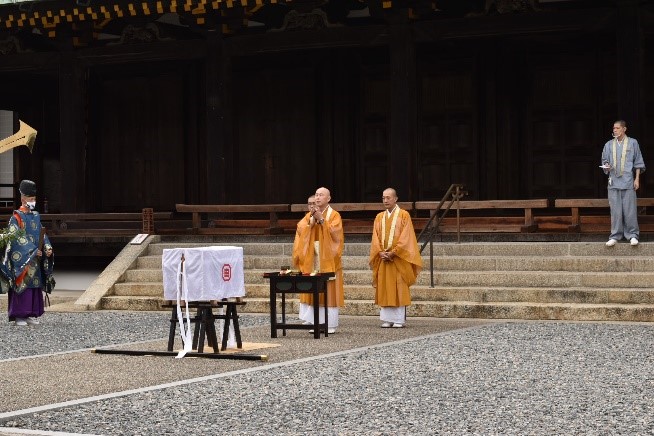
There are English explanation signboards so that you can learn something about these statues and their meanings. Unfortunately, photo is prohibited inside the main hall so I could not take any but some other “impolite” tourists just ignored the prohibition notices. Entry fee is 600yen for adults. You are required to take off your shoes, put them on the shelves and follow the route.
Access: This place is 1.8km from Kiyomizudera. You can either walk of go by bus from Gojozaka bus stop (bus 100 and get off at Higashiyama Nanajo bus stop).
8. Fushimi Inari Taisha
If you are not going to visit Kyoto in May, let’s remove Nagaokatenmangu (the first destination) from this itinerary and replace it by Fushimi Inari Taisha. It is designated as an Important Cultural property which enshrines deity Inari Okami.
You will find the cluster of five shrines which are situated along the hiking trails winding through the hill and leading to the peak of Mt. Inari whose elevation is 233m.
Fushimi Inari Taisha is well-known for its vibrantly vermilion Senbon Torii Gates (thousand gates) straddling the hiking paths. This place is usually packed with tourists since the entrance fee is free and above all, the shrines and torii gates are spectacular. If you are not ready for a hike, just walk uphill half way then take a rest and descend to the main gate.
You may notice that there are a plenty of fox statues as well as fox amulets sold here. Foxes are believed to be the messenger of God Inari who represents rice harvest and business, so they are worshipped as mythical creatures who hold the key to the rice storehouse.

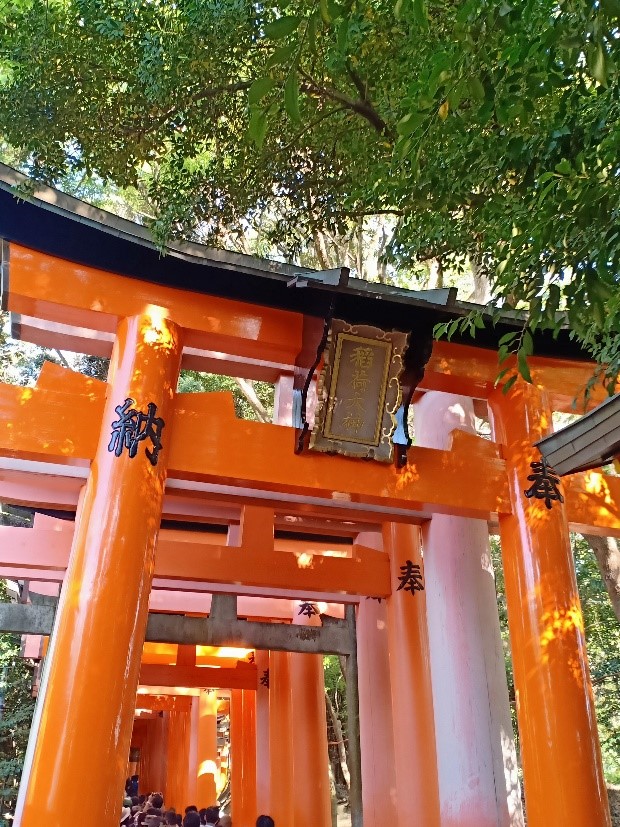
Access: Walk 500m from Rengeoin Pagoda to Shichijo train station. Take the semi-express train bound for Yodobashi and get off at Fushimi Inari station (16 mins). From there, you can easily access the shrine just by a few steps.
Below is the summary route for the itinerary :
https://www.google.com/maps/d/edit?mid=1YrX1HD7Q43n34uWjCUaPQUQsU6QmLGSW&usp=sharing
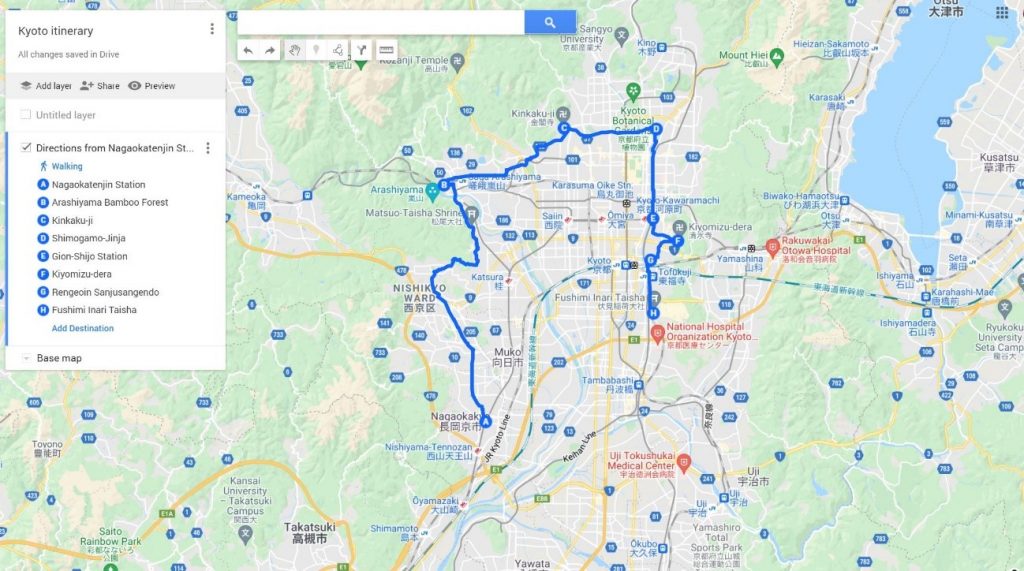

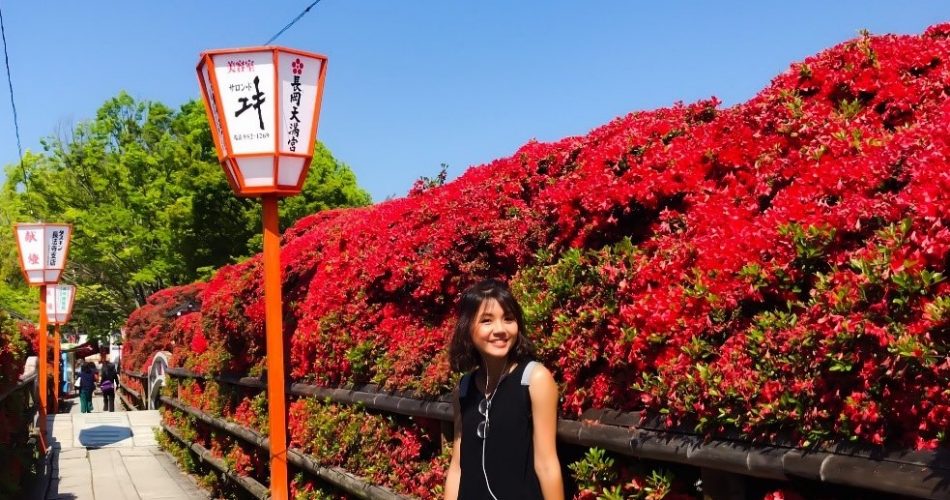
Comments